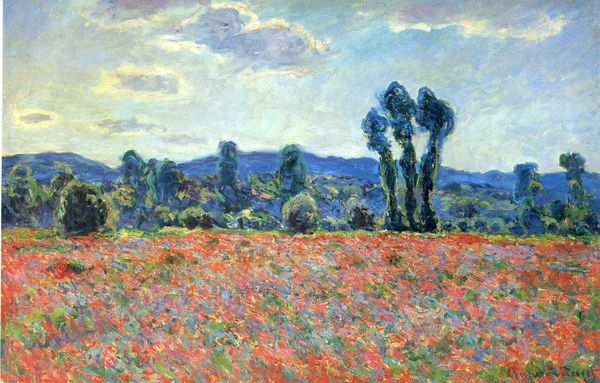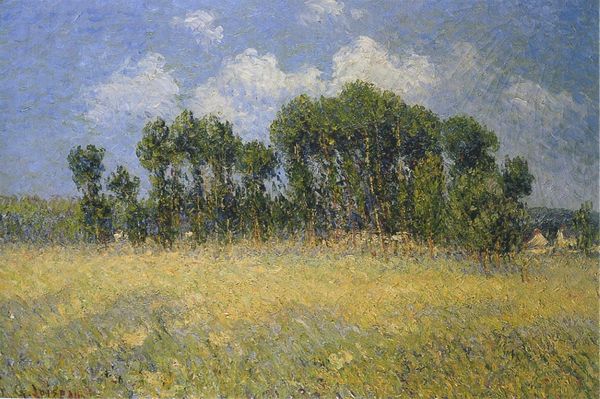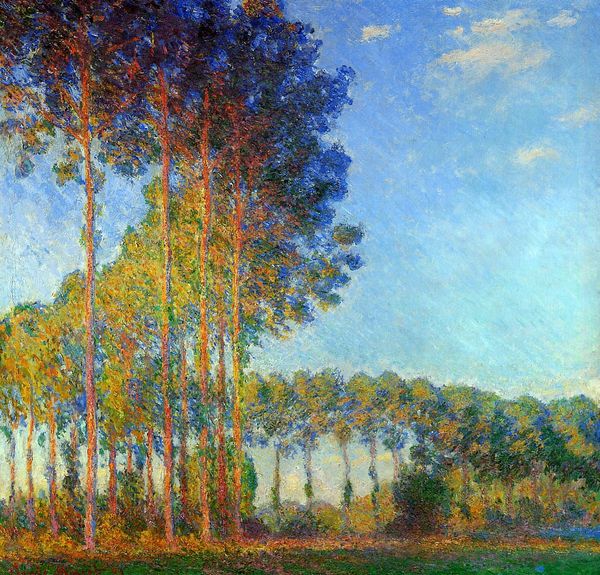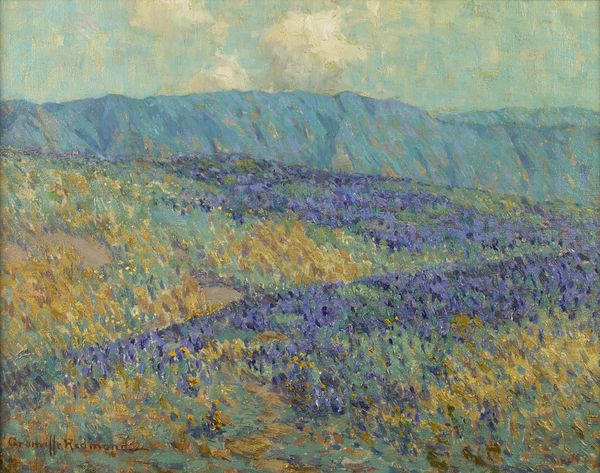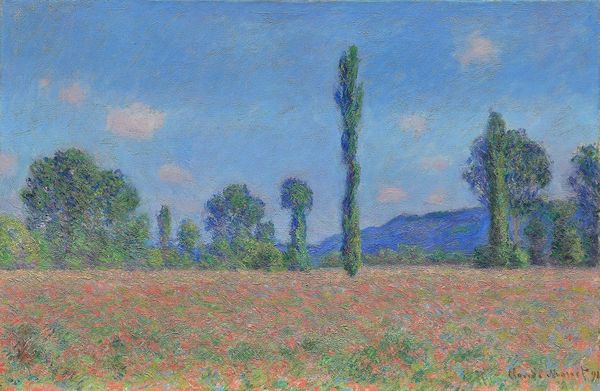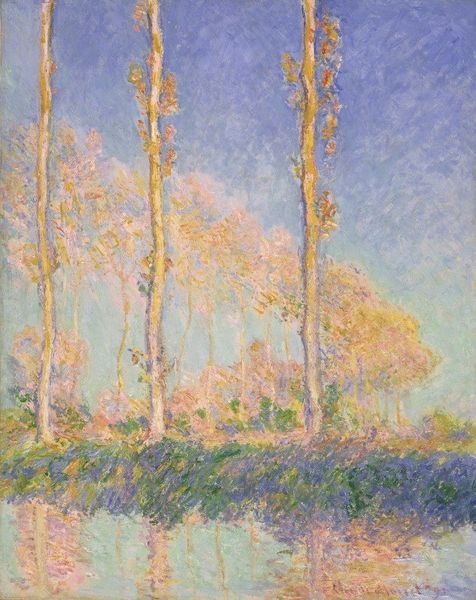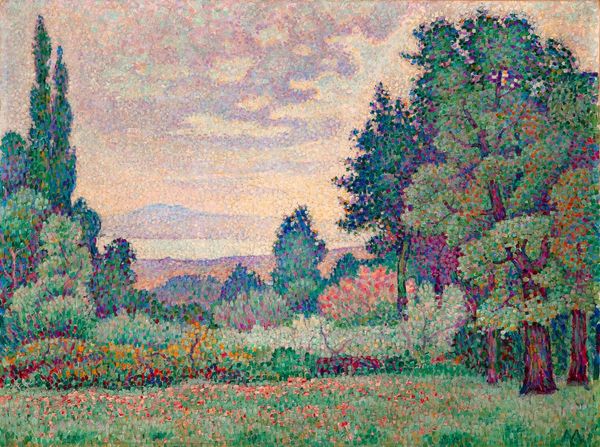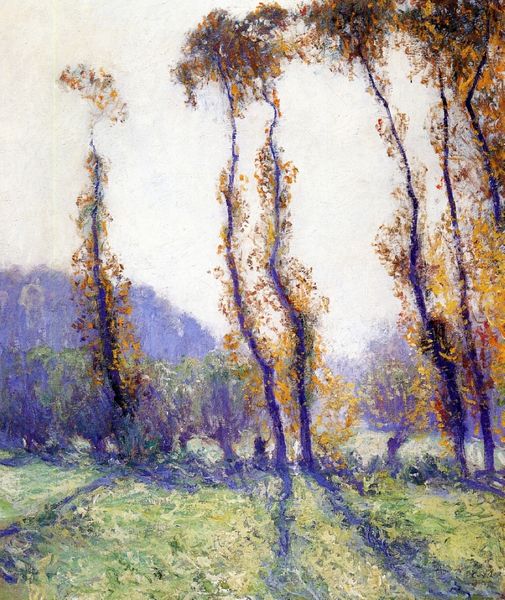
Poppy Field in Giverny 03 1890
0:00
0:00
claudemonet
Smith College Museum of Art (SCMA), Northampton, MA, US
painting, plein-air, oil-paint
#
painting
#
impressionism
#
plein-air
#
oil-paint
#
landscape
#
impressionist landscape
#
nature
Copyright: Public domain
Curator: Claude Monet's *Poppy Field in Giverny 03*, painted around 1890, presents a compelling snapshot of the French countryside. Editor: My first thought is texture. You can almost feel the rough canvas, the build-up of oil paint, creating a tangible field of poppies stretching before us. It looks heavy with pigment. Curator: Monet, of course, was deeply involved with plein-air painting. The series highlights his interest in capturing the fleeting effects of light and atmosphere in this locale, the field transforming in color throughout the seasons, and the politics embedded within depicting landscapes of leisure for the rising bourgeoisie. Editor: Absolutely, but the focus on materiality raises questions about artistic labor. These impasto strokes weren’t simply spontaneous; they were crafted, layered, the result of repetitive movements. Was it perceived as labor? How did that feed into the contemporary art market of late 19th century? Curator: Well, we see a radical shift in how artists present themselves within this time. Monet’s consistent work within his garden offers us access into the persona he’s curated as a “working artist,” if you will, aligning him with contemporary culture's fascination with the burgeoning middle class and modern life. It underscores the museum's and critic's roles in elevating the everyday scenes of bourgeois life. Editor: That reading makes me consider the societal shift of the era! The commercial availability of ready-mixed paints certainly expanded who was able to “paint” yet there’s also a stark visual of repetitive manual application across this entire work, nodding toward industrialized society. Curator: You know, while we analyze technique and broader historical contexts, the enduring popularity comes back to an emotional resonance of being in a space and time and capturing that transient feeling! Editor: Right, but recognizing the art object, like this *Poppy Field*, as also existing within networks of economic production and distribution gives a more complete view! Thanks for guiding me to observe from this perspective.
Comments
No comments
Be the first to comment and join the conversation on the ultimate creative platform.
